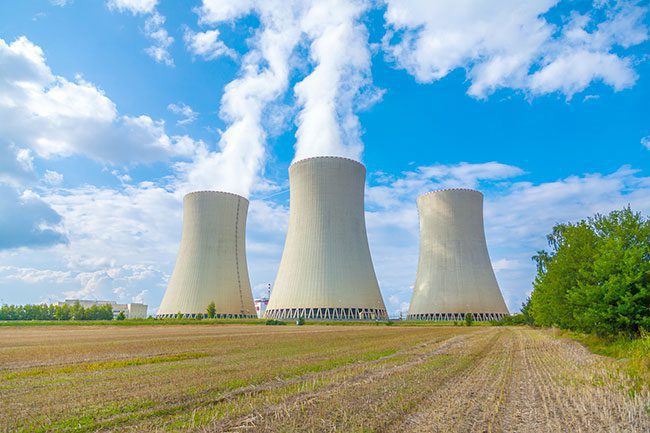Types of Conveyors in a Thermal Power Plant

A thermal power plant converts heat energy to electricity from heat sources such as steam and fossil fuels. Thermal power plants rely on conveyor transfer systems to transport coal and in some cases ash from the unloading point to the designated storage site. Depending on the site of the power plant and load capacity, you may need to employ one or multiple transfer systems.
The various conveyor systems available include:
Belt Conveyor
Belt conveyors help in the transportation of large volumes of coal over long distances. They come with an endless rubber, balata or canvas belt running over pulleys or a pair of end drums, with rollers (idlers) at regular intervals for support. The return idlers that help in the support of the empty belt are plain and fall widely apart. Belt conveyors offer a low power consumption carrying system, with a low initial installation cost. Belt conveyors successfully carry loads on an inclination of up to 20 degrees to the horizon and can carry between 50 to 100 tonnes per hour.
Belt conveyors offer a low power consumption and a highly economical transfer method that requires minimum repair and maintenance. It also allows for easy protection of the load from wind and rain with over-head covers. Depending on your needs, you can vary the speed of the belt for a fast or slow transfer rate.
While working with belt conveyors, you cannot carry your coal at heights beyond a 20-degree inclination. They also perform poorly over short distances.
Screw Conveyor
Screw conveyors come with a fitted endless helicoid screw and a driving mechanism connected to one end of the shaft; the other end of the shaft is often enclosed with a ball bearing. The system transfers coals from one end to the other when the screw rotates. Depending on your transfer capacity, you can use screws with a diameter of 15cm to 50cm, and vary the speeds from 70 to 120 r.p.m.
Screw conveyors come with an affordable initial cost, and offer the simplest and most compact transfer method. They also have provisions that allow you to dust proof your coal during the transfer.
Screw conveyors wear and tear fast, and consume more power per transfer while compared to belt conveyors. The torsional strain of the shaft also limits the length of the feed; it cannot exceed 30 meters.
Flight Conveyors
The flight convers works best with coal transfers that need the fitting of several storage bins located under the conveyors. It contains one or two chain strands where you attach your steel scrappers. The scrapers scrap the coal through a trough that discharges the coal at the bottom.
Flight conveyors require small headroom and allow you to regulate the speed of the conveyor with ease to suit your transfer requirements. You can also use the same conveyor when transferring ash.
The scrapping action causes wear and tear, reducing the service life of flight conveyors. Although there are several repair and maintenance options available, they become costly and uneconomical with time. The dragging action also increases power consumption per coal or ash transfer, increasing operation costs significantly.
Bucket Conveyor
The bucket conveyor contains buckets attached to a chain that moves over two wheels, making it extremely useful in vertical lifts. The buckets carry the coal at the bottom and discharge it at the top. The bucket conveyor elevator limits transfers to 30 –meters vertically, with a maximum horizontal inclination of up to 60 degrees.
Grab Bucket Conveyor
A grab bucket conveyor allows you to transfer and lift the coal from one point to the other. It makes use of a tower or crane to carry or transfer the coal with a 3 cubic meter bucket operating over a distance of up to 60 meters, and can carry over 100 tons of coal per hour.
Initially, you have to make a significant investment to acquire and install the system, however, operational cost are relatively low, making it highly economical, especially in the absence of other conveyor transfer systems.
Skip Hoist Conveyor
Skip hoist conditions come in different types of construction such as the double track tilting bucket discharge or the single track bottom discharge to suit your power plant transfer needs. The drive unit, which consists of a motor, gearbox, brake system and drum allows for installation at the top, intermediate or bottom level. You can create a self-supporting transfer system or hoist it on a building or other solid structure available on site.
Different factors influence the conveyor system you choose for your thermal power plant, for example, load capacity, expected turn over, operational costs, maintenance costs, inclinations and load capacity among others. Assess your needs and consider using a combination of two or more conveyor systems to meet your needs. For more detailed information on how we can meet the needs of your business in the United States, please contact us at Swanton Welding Company Inc.

